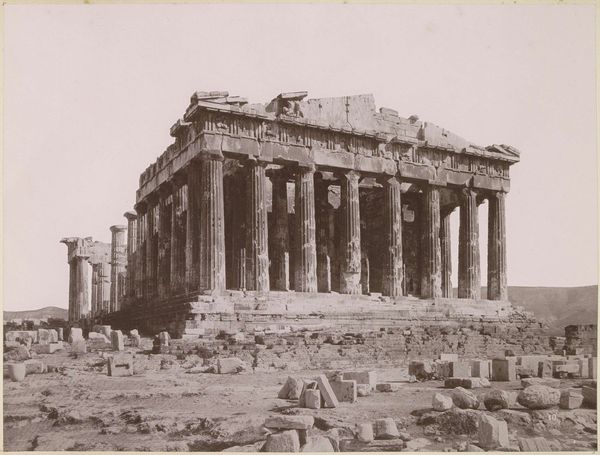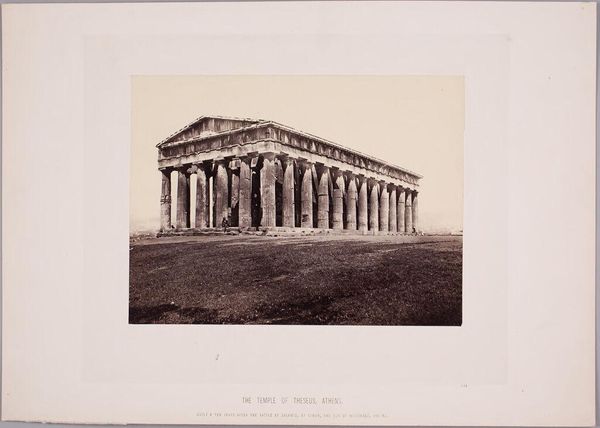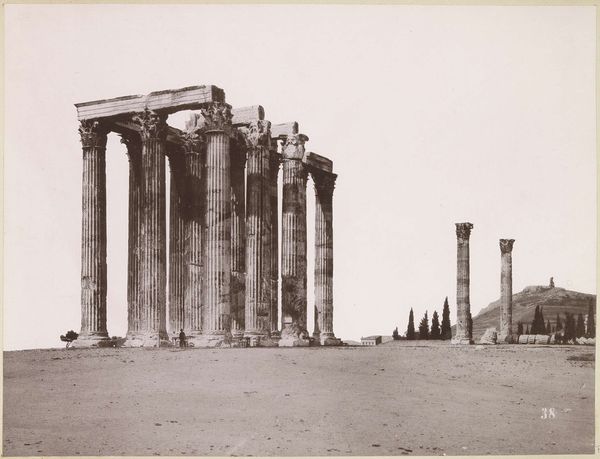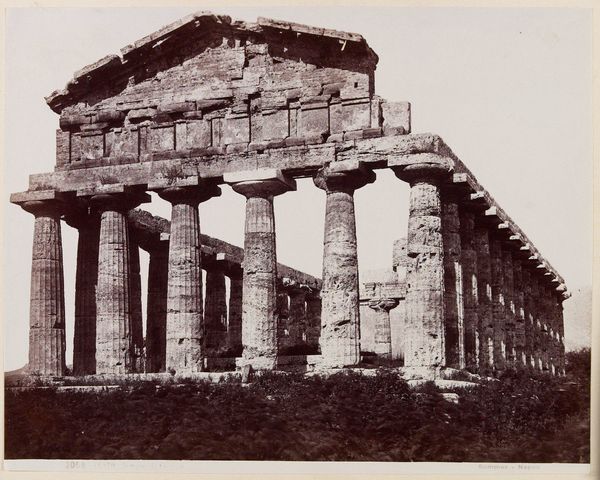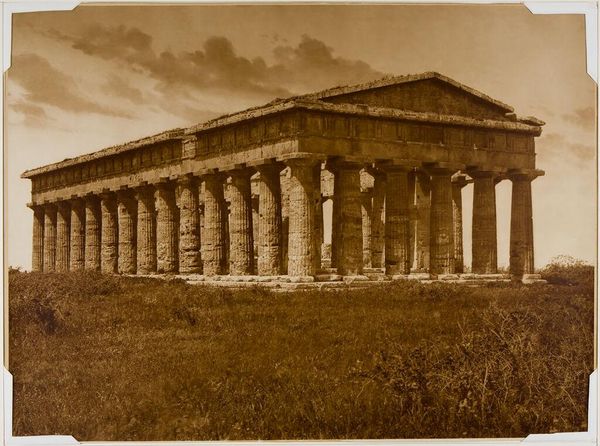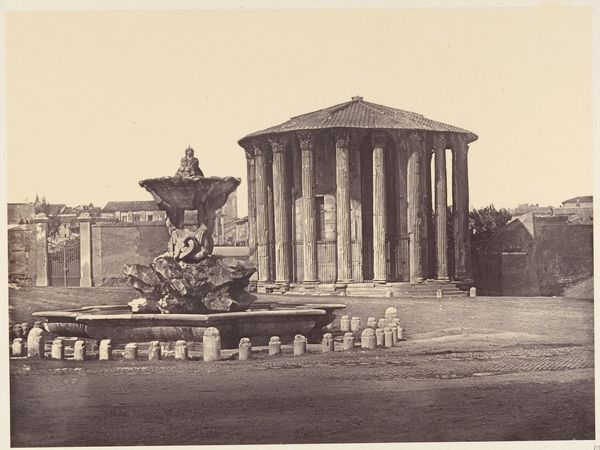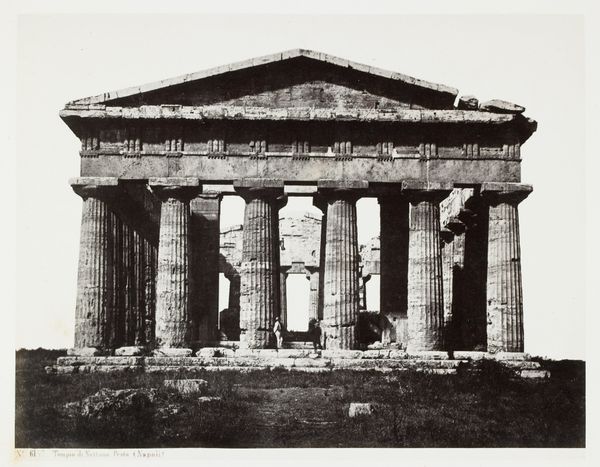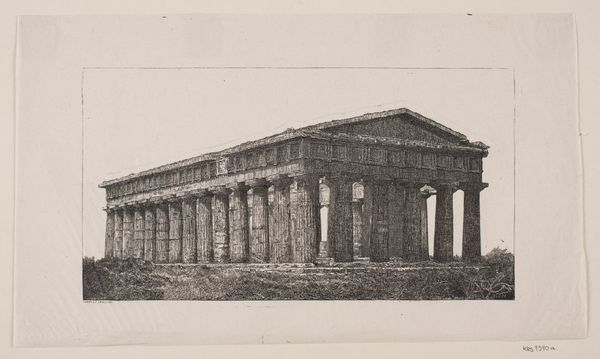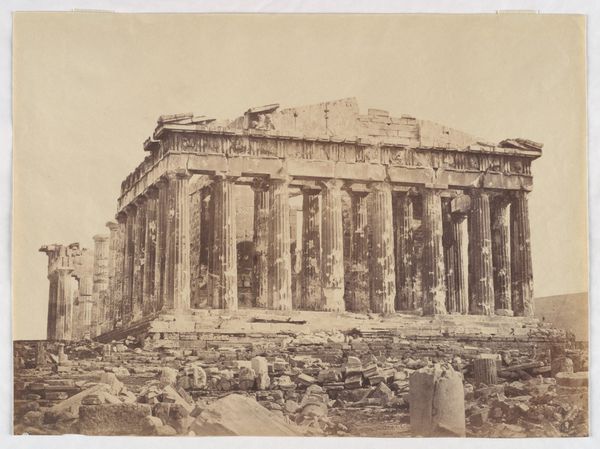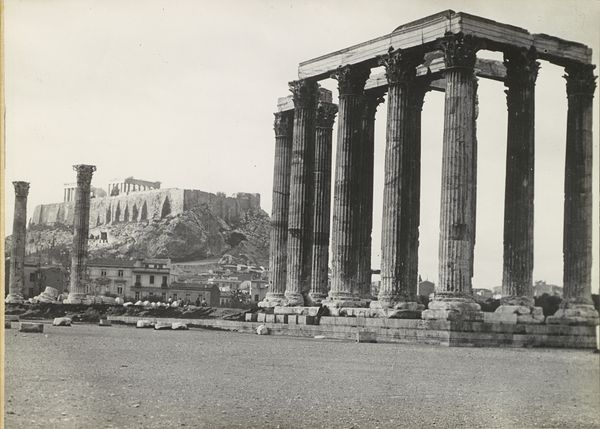
photography, architecture
#
greek-and-roman-art
#
landscape
#
photography
#
ancient-mediterranean
#
column
#
architecture
Dimensions: height 220 mm, width 290 mm
Copyright: Rijks Museum: Open Domain
Curator: Oh, it’s breathtaking! This photograph captures the Temple of Hephaestus in Athens. It’s an albumen print, created around 1880-1890 by the Rhomaides Frères. There’s a certain grandeur and melancholy in its monochrome tones, isn’t there? Editor: Grandeur, yes, undeniably. Melancholy... Perhaps it’s the sepia wash, a beautiful antique feel to it. It feels stoic, resolute – a kind of visual elegy to a lost world. The weight of history, quite literally. Curator: Precisely. The Rhomaides brothers were masterful at capturing these archaeological sites. Look at the fluted columns, the Doric order still so distinctly preserved after all this time. The clarity with which the architecture is presented is just amazing, allowing us to study these ancient construction methods, even though it’s only a photograph. Editor: And it's more than "just" a photograph. It’s a deliberate act of cultural preservation. Consider what the Temple represents – Hephaestus, god of metalworking, craftsmanship. That connects directly to the photographic process itself. Turning light and chemistry into something permanent. In a sense, it is itself, a forging. Curator: Ah, a forging of light! That's wonderful. It’s about how we engage with memory, right? I think these photographs offered a way for Europeans in the late 19th century to connect with their classical heritage. Nostalgia sells! Editor: Nostalgia, and a potent sense of self. The image of the temple here, with its almost severe clarity, symbolizes rationality, order, the foundations of Western thought. It’s a romanticized version of history, definitely, but one that shaped the cultural and intellectual landscape. Curator: True, these images are infused with a certain idealized classicism, not a raw depiction of antiquity. I find it interesting to think about how, even in capturing ruins, there’s a kind of visual rhetoric at play. It’s a testament to the enduring power of symbols. What’s your feeling after having reflected a bit more on the picture? Editor: Awe and admiration, certainly. There is also a somber reminder of time's relentless march. And it sparks an awareness of how images are far from neutral: they are infused with history, imbued with intent, shaping the stories we tell ourselves. Curator: Absolutely. They give meaning and shape our experience. This is more than an image. It's a powerful document, a historical artefact, and a beautifully composed scene all at once.
Comments
No comments
Be the first to comment and join the conversation on the ultimate creative platform.
